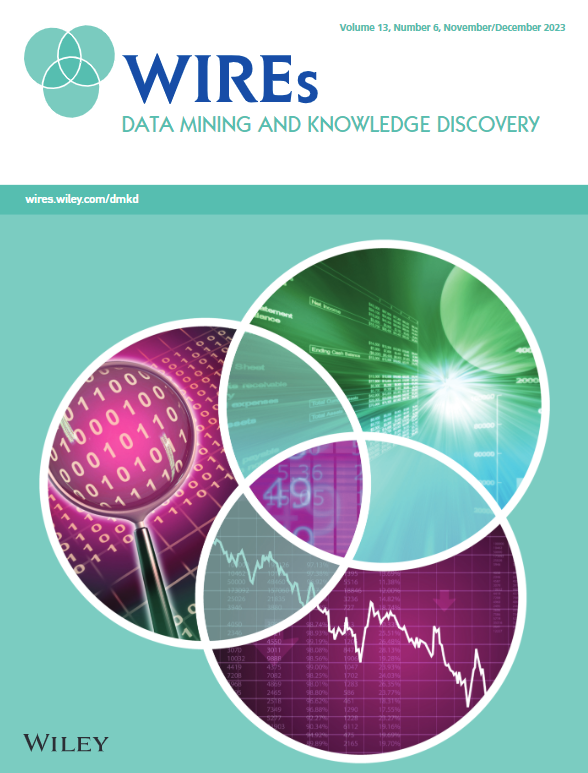A geometric framework for outlier detection in high‐dimensional data
IF 11.7
2区 计算机科学
Q1 COMPUTER SCIENCE, ARTIFICIAL INTELLIGENCE
Wiley Interdisciplinary Reviews-Data Mining and Knowledge Discovery
Pub Date : 2022-07-01
DOI:10.1002/widm.1491
引用次数: 0
Abstract
Outlier or anomaly detection is an important task in data analysis. We discuss the problem from a geometrical perspective and provide a framework which exploits the metric structure of a data set. Our approach rests on the manifold assumption, that is, that the observed, nominally high‐dimensional data lie on a much lower dimensional manifold and that this intrinsic structure can be inferred with manifold learning methods. We show that exploiting this structure significantly improves the detection of outlying observations in high dimensional data. We also suggest a novel, mathematically precise and widely applicable distinction between distributional and structural outliers based on the geometry and topology of the data manifold that clarifies conceptual ambiguities prevalent throughout the literature. Our experiments focus on functional data as one class of structured high‐dimensional data, but the framework we propose is completely general and we include image and graph data applications. Our results show that the outlier structure of high‐dimensional and non‐tabular data can be detected and visualized using manifold learning methods and quantified using standard outlier scoring methods applied to the manifold embedding vectors.

高维数据异常点检测的几何框架
异常点检测是数据分析中的一项重要任务。我们从几何角度讨论了这个问题,并提供了一个利用数据集度量结构的框架。我们的方法基于流形假设,也就是说,观察到的,名义上的高维数据位于低维流形上,并且这种内在结构可以通过流形学习方法推断出来。我们表明,利用这种结构显着提高了高维数据中离群观测的检测。我们还提出了一种新颖的、数学上精确的、广泛适用的、基于数据流形的几何和拓扑的分布异常值和结构异常值之间的区别,这种区别澄清了整个文献中普遍存在的概念歧义。我们的实验集中于功能数据作为一类结构化高维数据,但我们提出的框架是完全通用的,我们包括图像和图形数据应用。我们的研究结果表明,高维和非表格数据的离群结构可以使用流形学习方法进行检测和可视化,并使用应用于流形嵌入向量的标准离群评分方法进行量化。
本文章由计算机程序翻译,如有差异,请以英文原文为准。
求助全文
约1分钟内获得全文
求助全文
来源期刊

Wiley Interdisciplinary Reviews-Data Mining and Knowledge Discovery
COMPUTER SCIENCE, ARTIFICIAL INTELLIGENCE-COMPUTER SCIENCE, THEORY & METHODS
CiteScore
22.70
自引率
2.60%
发文量
39
审稿时长
>12 weeks
期刊介绍:
The goals of Wiley Interdisciplinary Reviews-Data Mining and Knowledge Discovery (WIREs DMKD) are multifaceted. Firstly, the journal aims to provide a comprehensive overview of the current state of data mining and knowledge discovery by featuring ongoing reviews authored by leading researchers. Secondly, it seeks to highlight the interdisciplinary nature of the field by presenting articles from diverse perspectives, covering various application areas such as technology, business, healthcare, education, government, society, and culture. Thirdly, WIREs DMKD endeavors to keep pace with the rapid advancements in data mining and knowledge discovery through regular content updates. Lastly, the journal strives to promote active engagement in the field by presenting its accomplishments and challenges in an accessible manner to a broad audience. The content of WIREs DMKD is intended to benefit upper-level undergraduate and postgraduate students, teaching and research professors in academic programs, as well as scientists and research managers in industry.
 求助内容:
求助内容: 应助结果提醒方式:
应助结果提醒方式:


